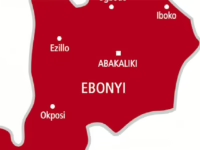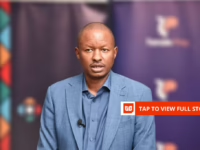Transferring money within Kenya remains a complex process beneath its seemingly straightforward surface. Often, funds originating from a bank account must pass through a mobile wallet before reaching the intended merchant, with each step incurring fees and each platform fiercely protecting its own infrastructure.
To address this, commercial banks introduced Pesalink, an instant payment system designed to eliminate these intermediate steps. However, nearly a decade after its inception, Pesalink’s success in simplifying Kenya’s payment ecosystem hinges more on regulatory and political factors than on technological innovation.
Expanding the Vision
Launched in 2017 by the Kenya Bankers Association (KBA), Pesalink was created to facilitate immediate money transfers between banks, bypassing the delays and costs typical of traditional interbank transactions.
Prior to Pesalink, digital transfers between financial institutions relied on electronic funds transfer (EFT) or real-time gross settlement (RTGS) systems-both cumbersome and ill-suited for everyday retail transactions.
Gituku Kirika, CEO of Integrated Payments Services Ltd (IPSL), the operator of Pesalink, reflects, “Before Pesalink, the only digital interbank transfer options were EFT and RTGS, neither offering real-time capabilities.”
While Pesalink has primarily served as a backend tool for banks rather than a widely recognized consumer brand, the payments environment around it has evolved dramatically.
M-Pesa now dominates Kenya’s payment landscape, handling approximately KES 8 trillion ($61.9 billion) annually. Meanwhile, Airtel Money, Telkom’s T-Kash, and a growing number of fintech wallets compete for market share. By 2024, Kenya boasted 73 million registered mobile money accounts, yet the ecosystem remains highly fragmented.
Financial institutions, fintech companies, and Savings and Credit Cooperatives (SACCOs) operate separate networks, leading to duplicated agent infrastructures and forcing merchants to manage multiple payment systems.
“Visiting a pharmacy in Nairobi, you might find it affiliated with five different payment providers,” Kirika notes. “This redundancy wastes resources and time. A unified agent network would eliminate these inefficiencies.”
Kirika emphasizes that Pesalink’s leadership is advocating for the platform to become the shared backbone connecting banks, mobile wallets, SACCOs, and fintechs into a cohesive, interoperable payment network.
“Our mission is to minimize friction in payments,” he explains. “That means creating infrastructure accessible to all players-not just banks.”
International Perspectives
Worldwide, payment systems are trending toward open, centralized networks. India’s Unified Payments Interface (UPI) exemplifies a government-supported platform that has revolutionized digital payments. In August alone, UPI processed over 12 billion transactions, surpassing the total card payment volume in the United States for the same period.
Similarly, Nigeria’s NIBSS Instant Payments (NIP) facilitates over 90% of bank-to-bank transfers in Africa’s fourth-largest economy. Both platforms have scaled by providing a single integration point for all participants and lowering transaction costs through high volume. Kirika envisions Pesalink as Kenya’s counterpart to UPI or NIP.
While these comparisons highlight Pesalink’s potential, they also reveal its limitations. The Central Bank of Kenya (CBK) has developed a National Payments Strategy and consulted on a fast payments system, but unlike India or Nigeria, it has not mandated a unified national switch. Pesalink remains fully owned by the KBA.
“Globally, governance structures are designed to represent all payment stakeholders in decision-making and ownership,” Kirika explains. “This is an area we must address.”
This governance gap influences perceptions: fintechs and wallet providers hesitate to join a system controlled by their competitors, while regulators weigh the benefits of reduced costs and interoperability against concerns about competition within a bank-led platform.
Kirika confirms that IPSL maintains ongoing discussions with the CBK as the regulator updates the National Payments System Act and implements consumer protection measures.
Reducing Transaction Layers
Pesalink’s goal is to simplify payments for users with multiple accounts by removing unnecessary intermediaries. By enabling direct transfers without routing funds through mobile wallets, transaction fees can be minimized.
“Currently, some wallet providers route money through multiple platforms before reaching a bank, adding ‘hops’ and costs,” Kirika explains. “By opening ecosystems, we lower these expenses, which ideally benefits consumers through reduced fees.”
Each additional step introduces friction for both businesses and customers. Pesalink promises fewer transaction layers and lower wholesale costs, potentially leading to cheaper retail fees. However, pricing decisions remain with banks and wallet providers, who must balance volume growth against margin reductions.
For smaller players, the economics are attractive. New fintech entrants in Kenya face the challenge of negotiating separate integrations with banks and telecom operators, each incurring technical and financial burdens. Pesalink’s unified gateway lowers these barriers, enabling cost savings that can be passed on to users.
Currently, Pesalink connects 80 service providers, including all major banks and several SACCOs. Negotiations are ongoing with Safaricom and Airtel to fully integrate their mobile wallets.
Should Pesalink succeed at the merchant and agent level, it could gain significant momentum. Although the CBK has advocated for agent interoperability, progress has stalled due to resistance from dominant players. Achieving this would allow a single agent to serve customers across banks and telcos, eliminating the need for multiple affiliations at the same retail outlet.
Success would mean customers could transact seamlessly at any agent-whether bank, telecom, or SACCO-without concern for the provider’s branding.
Other African countries are exploring similar initiatives. Uganda’s banks established the Agent Banking Company in 2018, creating a shared network of over 20,000 agents. In Ghana, the GhIPSS switch supports wallet-to-bank transfers and is expanding into QR code payments for merchants.
Achieving Uniformity
Even with interoperable infrastructure, standardizing the user experience remains a significant challenge.
“Scaling payments requires harmonizing user interfaces, pricing, and messaging protocols,” Kirika states.
Currently, each provider designs its own interface, resulting in inconsistent experiences that hinder Pesalink’s brand recognition. Unlike M-Pesa, which offers a unified and familiar platform to millions, Pesalink remains largely invisible, operating behind bank and fintech apps.
For Pesalink to become Kenya’s definitive “digital payments rail,” it must convince banks, telcos, SACCOs, and fintechs to view it as neutral infrastructure rather than a bank-centric system. The technology is ready; what remains is building trust and aligning policies, as seen with India’s UPI and Nigeria’s NIP.
The coming years will be critical. If the CBK advances interoperability mandates and Pesalink secures partnerships with key players, it could transition from a behind-the-scenes utility to the foundational network powering everyday transactions.

























0 Comments